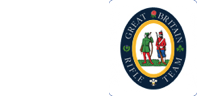H.M. The Queen's Prize
The Queen's Prize is generally regarded as the most coverted prize in the shooting world. It was first shot for in 1860 when the Sovereign (Queen Victoria) gave a prize of £250 for the winner. This amount has remained unchanged to this day although in the original days, it was a considerable sum. The winner earns the right to have the initials 'GM' after his or her name (as you may notice in our team list). As detailed in the section below, there are three stages to the competition, the winners of the second stage earn the initials 'SM'.
 The final stage is shot on the last Saturday of the NRA Imperial meeting held in July. As the climax of the week, it is the most popular day with spectators as shooting becomes a spectator sport. Each of the 100 finalists has a board behind them showing where their shots have gone. A large score board at the top of Stickledown range keeps everyone up to date with the leader as the competitors shoot through the afternoon. After the winner is presened with the Gold badge (pictured below), he or she is chaired off by fellow team mates to the tune of 'See the Conquering Hero comes' following a military band and the range officials.
The final stage is shot on the last Saturday of the NRA Imperial meeting held in July. As the climax of the week, it is the most popular day with spectators as shooting becomes a spectator sport. Each of the 100 finalists has a board behind them showing where their shots have gone. A large score board at the top of Stickledown range keeps everyone up to date with the leader as the competitors shoot through the afternoon. After the winner is presened with the Gold badge (pictured below), he or she is chaired off by fellow team mates to the tune of 'See the Conquering Hero comes' following a military band and the range officials.
|
|
Three people have won the Queen's Gold Medal on three occasions - AG Fulton, A Marion and TA Ringer. |
Match Conditions
The Queen's Prize has three stages with only the top going through to the subsequent one. In most years well over 1000 competitors start off shooting 2 sighters and seven to count at 3, 5 and 600 yards. The top 300 qualify for the Second stage where they shoot 2 sighters and 10 rounds to count. From these 300, only 100 make the final stage. In the final stage, the shooters scores from the second stage are added to the scores they make shooting 2 sighters and fifteen to count at each 900 and 1000 yards.



